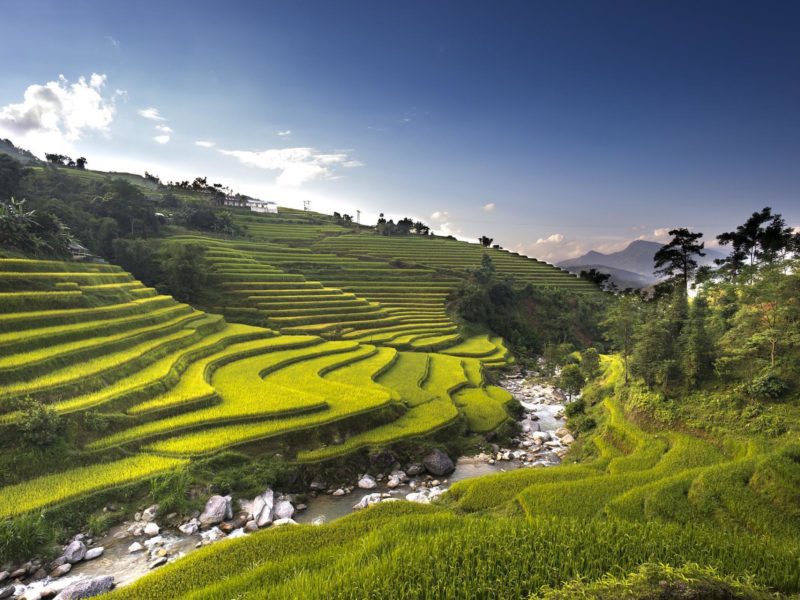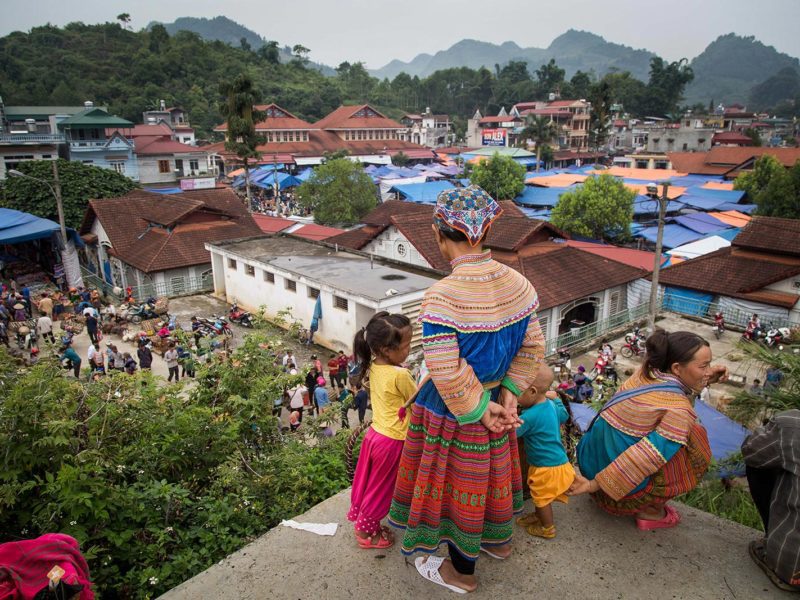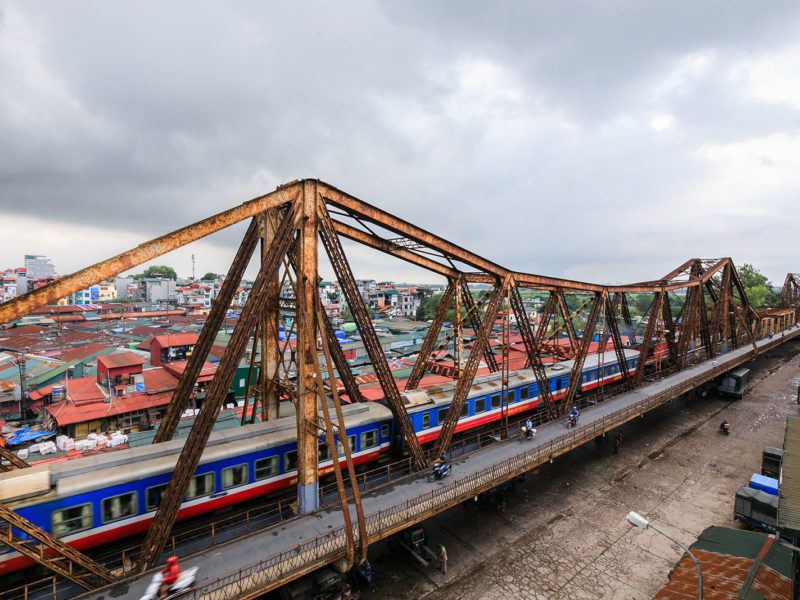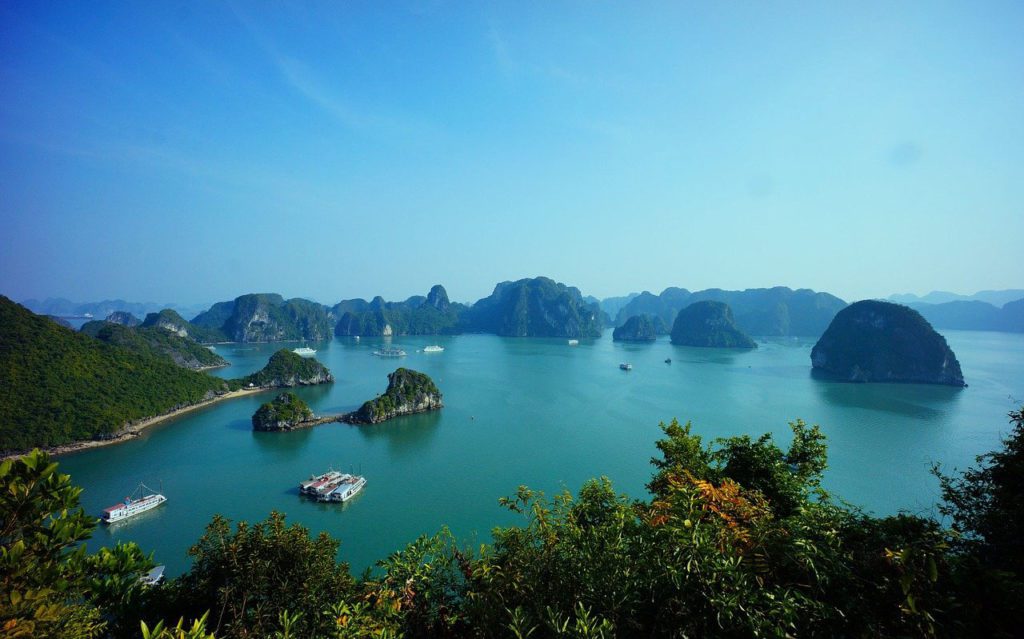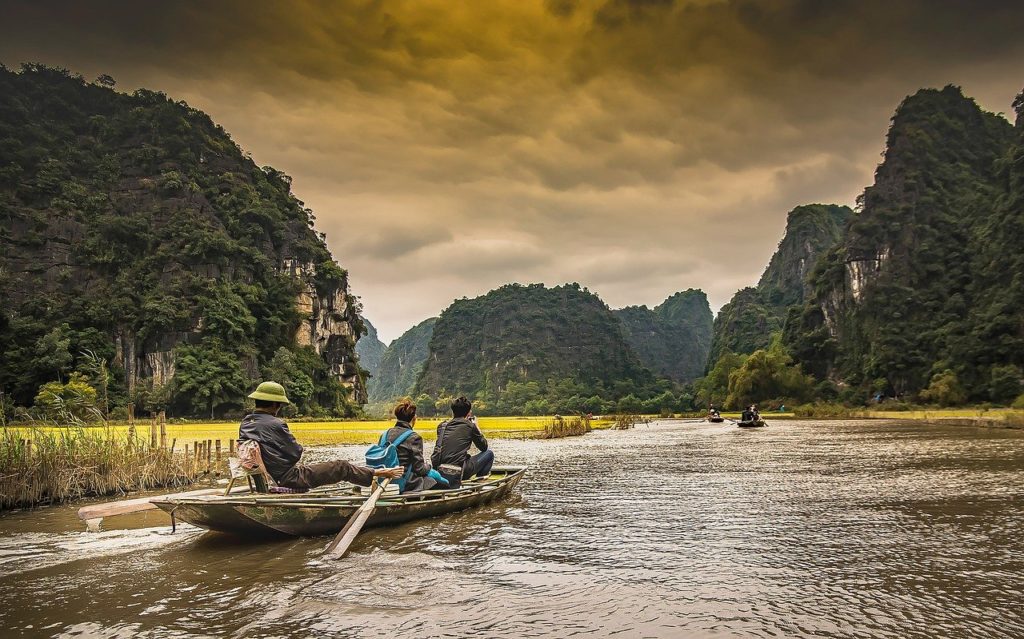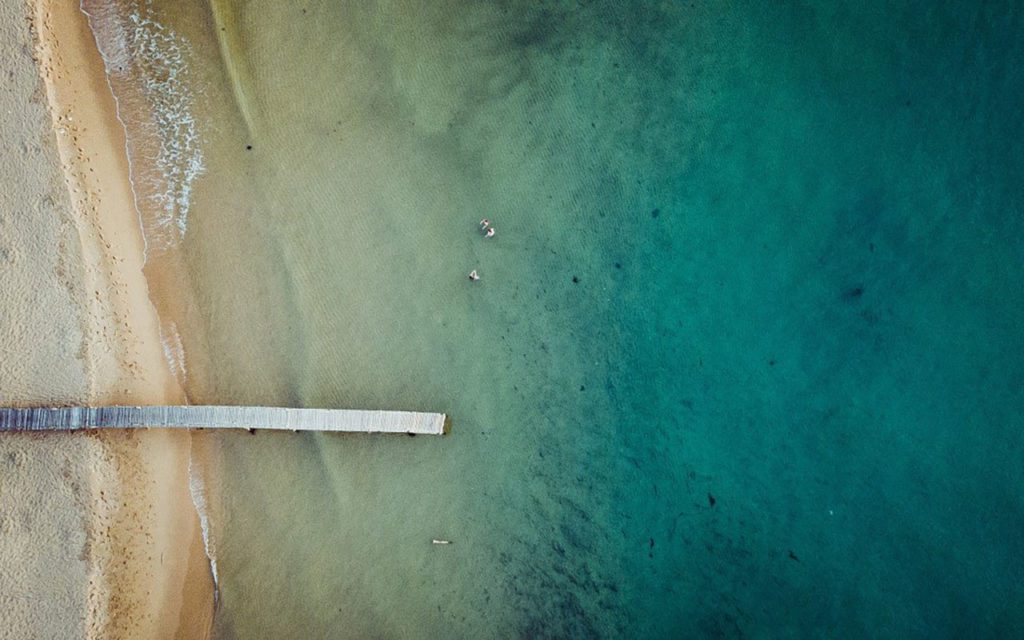Embark on a journey to explore the history and cultures of Vietnam
Vietnam is a rich country with a history, arts, and culture. Explore this wealth through tours specially designed for those who are eager to learn.
This is ideal for history and culture enthusiasts, but also for those who are not so much into beaches or hiking!
The strengths of our tours? Certainly the diversity of visits: archaeological remains, architectural styles, religious sites, historical heritage, museum visits, meetings with ethnic groups and their traditions.
All our tours are private, for those who want to discover Vietnam in a privileged way with French-speaking guides who lovingly explain the customs and traditions of their country.
Discover our cultural travel ideas in Vietnam below and contact us to personalize them !
Our cultural travel ideas in Vietnam
The main cultural destinations in Vietnam
If you’re considering a cultural tour in Vietnam, there are a few destinations not to be missed to learn about the country’s history and cultural diversity.
The Northern mountains
Even if you’re not a seasoned hiker and you avoid trekking, we still recommend spending a few days in Northern Vietnam to discover village life and ethnic minorities. It’s indeed a very enriching cultural immersion experience, especially if you’re traveling with children. If you don’t have the time or inclination, you could visit the Ethnographic Museum in Hanoi, which provides a detailed description of the customs and traditions of the country’s 53 ethnic minorities. There are even outdoor reconstructions of traditional houses in the museum’s gardens.
Hanoi
Hanoi is, of course, the cultural and historical capital of Vietnam. Through the visit to the city’s monuments, you will trace the entire history of Vietnam: the influence of Confucian precepts with the Temple of Literature, the Vietnamese imperial dynasties with the Thang Long Citadel, the colonial period with the Long Bien Bridge or the Opera House, and more. You can also get an introduction to Vietnamese beliefs and religious practices with visits to Tran Quoc Pagoda and several other temples in the city. Certainly, you won’t forget to explore the Old Quarter of Hanoi, which was the city’s economic heart for a long time and remains a unique place in the world
Hue
The city of Hue in Central Vietnam is another essential stop for those who want to learn the history of the country. It was in Hue that the Nguyen Dynasty built its Imperial City in the 19th century. It prospered, adorned with significant artistic and intellectual reputation until the arrival of French troops in the 1880s. The Imperial City was largely destroyed, and many valuable possessions such as furniture and manuscripts were stolen or burned. Subsequently, the wars of independence, against the French and the Americans, further devastated Hue’s cultural and historical heritage…
Fortunately, for several years now, extensive restoration efforts have been taking place, and it is once again possible to stroll through an Imperial City that has regained its splendor! In addition to the Imperial City, you will have access to many other significant monuments, including the tombs of the Emperors, each of which requires a few hours to visit.
Hoi An
While Hoi An is primarily a tourist town today, it was an important port from the 15th century. Due to its location, Hoi An has been influenced by many cultures, and this influence is reflected in the architecture of its Old Town. The Old Town has been a UNESCO World Heritage Site since 1999 and boasts no less than 844 listed historical buildings. You may not have the time and patience to visit them all, but several of them are must-see attractions, including the Japanese Covered Bridge, built in 1593 to connect the Japanese and Chinese quarters of the town; the Tan Ky House, the oldest in Hoi An and the first to be classified as a Historical Monument in 1985; and the Phuc Kien Pagoda, which was once a gathering place for the community from the Fujian Province.
Ho Chi Minh City
The most populous city in Vietnam with eight million inhabitants and a true economic leader in the country, Ho Chi Minh City is also a prominent historical and cultural destination.
Several centuries ago, the city was just a fishing village belonging to the Khmer Empire. It was in the 17th century that the city started receiving Vietnamese and Chinese populations and was named Saigon after the river that flows through it. It later became the city with the highest French population during the colonial period. Renamed Ho Chi Minh after the reunification of the country in 1975, it is now one of the most dynamic metropolises in Asia.
Our guides will help you explore the different districts: Vietnamese, Chinese, and French. Some of the iconic buildings you shouldn’t miss include the Notre-Dame Cathedral of Saigon, built in 1880; the Reunification Palace, constructed in 1868 and renovated in 1955; and the Ben Thanh Market, dating back to 1860. These are just a few of the interesting sites to discover.
The most important historical sites in Vietnam
In addition to these cities that are a must-visit during your cultural journey in Vietnam, there are other historical sites that might pique your interest during your trip. We have listed below 10 sites that could be included in your customized itinerary in Vietnam.
Cham Museum, Da Nang
The Champa kingdom lasted for more than 10 centuries, from the 5th to the 15th century. A museum was needed to honor the memory of this great Cham civilization. Da Nang was chosen to host this museum due to its proximity to the My Son sanctuary. In this museum, you will find no less than 300 artifacts, objects that notably reflect the art of Champa sculpture.
My Son sanctuary
To extend your day dedicated to the Cham civilization, you could visit the ruins of the My Son sanctuary located 35 km west of Hoi An. My Son played a very important role in the religious life of Champa, as the kings successively embellished the site over more than 10 centuries. Even though the site has not been spared by history – one can mention the American attack in 1969, which had the explicit goal of destroying the monuments – it is a must-visit for those who want to learn about the history of ancient civilizations.
Temple of Literature, Hanoi
As the influence of My Son was declining in the southern part of the present-day country, Confucianism was the dominant force in North Vietnam. In the 11th century, the first university in Hanoi was built with the purpose of teaching arts and morality to the children of the first Ly dynasty kings. The establishment of this university marked the entry of mandarins into the elite culture of Vietnam. Young men selected to enter became high-ranking officials serving the nation and the state. Upon graduation, these young men became the ‘Sons of the Nation’ (Quoc Tu Giam).
In the 19th century, the university was transformed into a temple dedicated to Confucius. Several renovations of the buildings were carried out with the assistance of the French School of the Far East in 1920 and 1947. Other renovations have been made since the end of the Indochina and Vietnam Wars.
Even today, students come to the temple to offer prayers or celebrate good school results.
Hoa Lu ancient capital, Ninh Binh
Hoa Lu was the first capital of Dai Co Viet, the ‘Unified Vietnam,’ between 968 and 1010. It was Emperor Dinh Tien Hoang who chose this place to be the main city of his empire. Two other emperors, Tien Le and Ly, succeeded him before King Ly Thai To decided to transfer the imperial city (Thang Long) to Hanoi. However, he did not forget to build a large number of temples in honor of his predecessors in Hoa Lu. These are the temples you will discover when visiting the former capital today.
Imperial Citadel of Thăng Long
Among the other historical sites that testify to the millennium-old city of Hanoi is the Thang Long Imperial Citadel. The citadel was built by King Ly Thai To, who thereby gave birth to the city of Hanoi. The first king of the Ly dynasty had it erected on the ruins of a Chinese citadel, as a symbol of his domination over the Chinese invader he had just defeated. An essential visit if you want to understand the sources of Vietnamese civilization and its development over the centuries.
Old Quarter of Hanoi
Sometime later, in the 13th century, Hanoi began to attract artisans from neighboring regions who soon organized themselves into craft cooperatives and guilds. From that point on, the residents of each village gathered and operated on the same street, giving each of them the homogenous appearance that is still evident today. The ’36 Guild Streets of Hanoi’ were born. The streets belonging to a guild of artisans were named ‘hang’ (merchandise), followed by the name of the product the guild specialized in. Since that time, this area has always been the heart and economic hub of the capital. It remains a must-visit for all travelers today. Beyond cafes, bars, restaurants, and souvenir shops, you can discover many sites that tell the story of this neighborhood. For example, there is ‘The Old House at 87 Ma May Street,’ a residence from the late 19th century in the old quarter of Hanoi
Imperial City of Hue
As we have seen, the city of Hue is rich in history, as it was the capital of the Nguyen lords of the South in the 16th century before becoming the capital of the reunified Vietnam in the early 19th century under the rule of Gia Long. It was Gia Long who founded the famous Nguyen dynasty and had their Imperial City built. His dynasty prospered for over a century, adorned with a significant artistic and intellectual reputation, until the arrival of French troops in the 1880s. When visiting the Imperial City, you will immerse yourself in Vietnam before French colonization.
Long Bien bridge, Hanoi
The French presence, which lasted nearly a century, significantly influenced the landscape and architecture of Vietnam. Among the most important sites, we can mention the Long Bien Bridge, which has become one of the symbols of the capital, Hanoi.
Originally called the ‘Paul Doumer Bridge,’ named after the Governor-General of Indochina at the time, it was inaugurated on February 28, 1903, after four years of construction. Contrary to popular belief, it was not Gustave Eiffel who was behind this bridge, but the Daydé and Pillé company, which was later absorbed by the Eiffel Group in the second half of the 20th century. At the time, this bridge was the first steel bridge to cross the Red River. It symbolized the engineering capabilities of the French at the time and was the fourth longest bridge in the world.
Hoa Lo prison, Hanoi
Among the many museums related to the wars against the French and later the Americans, we can mention the former Hoa Lo Prison in Hanoi. The prison, now a museum, recounts the suffering endured by Vietnamese revolutionaries during the French colonial period. What’s most interesting is that the prison later became one for the Americans, who, in turn, underwent interrogations and torture by the Viet Minh.
Cu Chi tunnels
The Cu Chi Tunnels are a symbol of the inventiveness and resilience of the Vietnamese during their war against the French and later the Americans. Created by the Viet Minh during the French occupation, this tunnel system was further developed during the conflict with the Americans, extending to a staggering 250 kilometers! At the height of the war, over 15,000 people took shelter in these tunnels, and they were known as the endpoint of the Ho Chi Minh Trail.
Our other travel themes
